![]()
![]()
![]()
Use LEFT and RIGHT arrow keys to navigate between flashcards;
Use UP and DOWN arrow keys to flip the card;
H to show hint;
A reads text to speech;
24 Cards in this Set
- Front
- Back
- 3rd side (hint)
|
Porifera
|
- sponges
- "pore bearing" - no symmetry - no tissues/organs - no nervous system - filter feed - attach to seafloor or other surface - secretion for defense mechanism - hermaphrodites -reproduces both asexually and sexually |
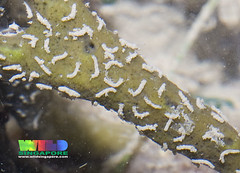
Sponges
|
|
|
Cnidaria
|
- radial symmetry
- two tissue layers (endoderm and ectoderm) - two shapes: medusa and polyp - medusa: bell shapped with mouth on lower surface - polyps: tube shaped; one end attaches to a surface - sting as defense mechanism and way to catch prey - nervous system: nerve net - hydrostatic skeleton |
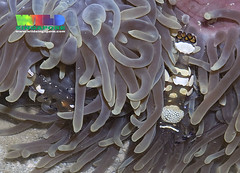
|
|
|
Platyhelminthes
|
- invertebrates
- bilateral symmetry - lack coelom - have a brain - open circulatory system - hermaphrodites - segmented on inside by repeating organs |
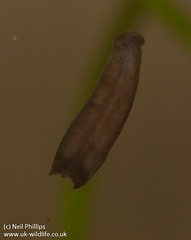
|
|
|
Units of Classification (in correct order)
|
1. Kingdom
2. Phylum 3. Class 4. Order 5. Family 6. Genus 7. Species |
|
|
|
Annelids/Annelida
|
- bilateral
- have a coelom - segmented inside and out - eats soil and filters out the nutrients - ceolom regulated by nephridia - closed circulatory system with 5 single-chambered hearts - brain controls nervous system - hydrostatic skeleton - skin is the respiratory surface |
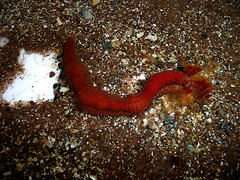
|
|
|
Mollusca
|
- gills if in water, but lungs instead of gills if on land
- bilateral symmetry - mantle - complete digestive system - types: chitons, gastropods, bivalves, and cephalopods - chitons probably evolved first - gastropods live on land - bivalves have a two part shell - most have open circulatory system, but cephalopods have closed |

|
|
|
Nematoda
|
Many species (c. 25,000 described)
--> Roundworms • Aquatic, terrestrial •Important parasites (all plants & animals Interesting Phylum : Nematoda have at least one species of nematode) • Most abundant animals in Antarctica • Moult (like arthropods) • Eutelic (fixed number of cells/ species) |
|
|
|
Arthropoda/Arthropods
|
bilateral symmetry
- segmented body - exoskeleton - jointed apendages - sensory specializations: -one or more pairs of eyes -antennae -specialized developmental stages such as metaphorphosis - open circulatory system - complete digestive system - respiratory system changes within groups of arthropods - decentralized nervous system, but have ganglia - very, very diverse - types: chelicerates (horseshoe crabs and arachnids), crustaceans (crabs, shrimp, lobsters, pill bugs, barnacles), myriapods (millipedes and centipedes), and insects (beetles, ants, butterflies, flies, etc.) |

|
|
|
Echinoderms
|
- deuterostomes
- begin life with bilateral symmetry, but develop to have radial symmetry - have endoskeleton that is right under the skin - non-centralized nervous system - varied digestive tracts - gender differentiated - closed circulatory system - no brain |

|
|
|
Chordates/Chordata
|
- deuterostomes
- most are vertebrates, but some are invertebrates - chordate embryos have: - notochord - a dorsal, hollow nerve chord - gill slits - a tail that extends beyond the anus - bilateral - have coelom - cephalization - segmentation - complete digestive system - closed circulatory system |
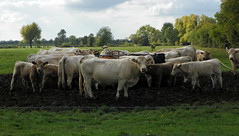
|
|
|
Acoelomate
|
Have no body cavity
|
|
|
|
Radial vs Bilateral
|
Radial symmetry: The quality of having many lines of symmetry that all pass through a central point.
Bilateral symmetry: Arrangement of body parts so that there are distinct left and right halves that mirror each other |
|
|
|
Cephalization
|
Concentration of sense organs and nerve cells at the front of an animal's body.
|
|
|
|
Protostome
|
Animal whose mouth is formed from its blastopore (everything else).
|
|
|
|
Monecious
|
Hermaphroditic
|
|
|
|
E.g. Chordata
|
Example: mammals, birds, lizards, sharks. Dorsal nerve cord, backbone wraps around nerve cord (notocord), post-anal tail, pharyngeal gill slits.
|
|
|
|
E.g. Mollusca
|
Example: clams, snail, squid. Possess shell, but no skeleton, mantle produces shell, tube feet, radula (tongue with spines)
|
|
|
|
E.g. Cnidaria
|
Example: anemone, coral, jellyfish. Possess tentacles, stinging cells, one cavity (mouth AND anus), jelly in between layers, marine, no skeleton
|
|
|
|
Phylum: Tardigrada
|
‘Water bears’ or ‘Moss Piglets’
• Live in fresh water, moss and undergrowth • Capable of surviving extremes (10 years without wa ter) • On final flight of space shuttle Endeavour (May 20 11) Phylum: Tardigrada • Also eutelic (species specific number of cells) |
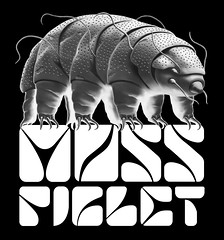
|
|
|
Know your Phyla: 5 Criteria
|
1. SYMMETRY - what kind?
2. GERM LAYERS - how many? 3. COELOM (body cavity) - present or absent? 4. BLASTOPORE - does it form mouth or anus? 5. SEGMENTATION - present or absent? |
|
|
|
Importance of the Coelom
|
--> Fluid-filled so can be used as internal support
•Separates internal processes from gut The importance of the coelom Coelom • Allows transport of fluids (circulatory and excretory systems) • Provides space for development of internal organs • Enables increased body size |
|
|
|
Mantle
|
Dorsal body wall of mollusc which often forms shell
|
|
|
|
Mantle Cavity
|
In molluscs, the space between mantle and main body
where gills (or lungs in terrestrial snails) are found |
|
|
|
Notochord
|
A stiff rod of mesoderm found next to the nerve chord in all chordate embryos (and some adults)
|
|

